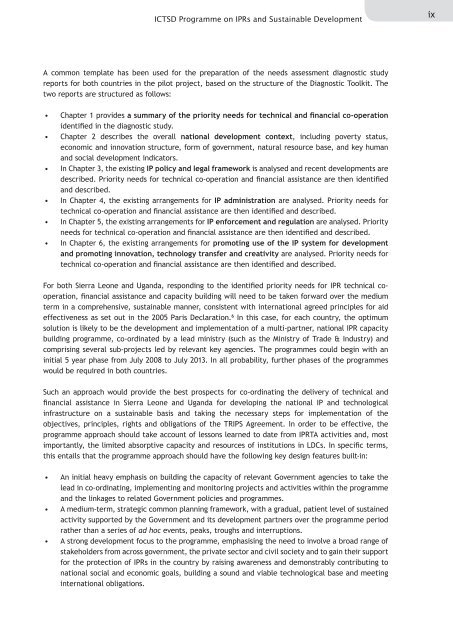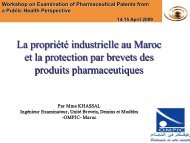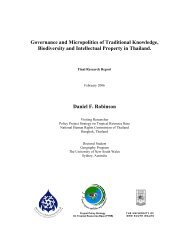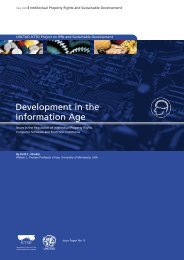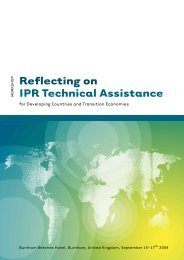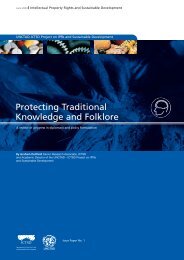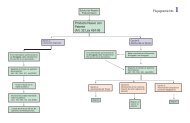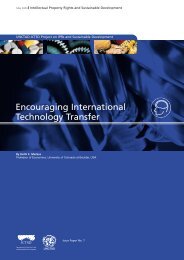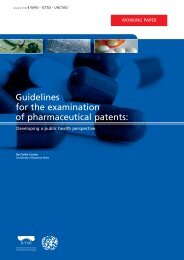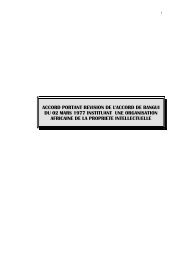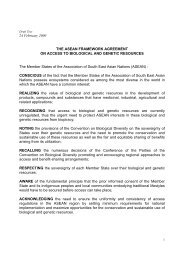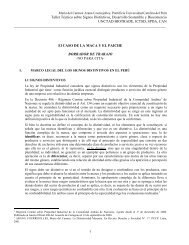Final Report of Uganda Intellectual Property ... - IPRsonline.org
Final Report of Uganda Intellectual Property ... - IPRsonline.org
Final Report of Uganda Intellectual Property ... - IPRsonline.org
Create successful ePaper yourself
Turn your PDF publications into a flip-book with our unique Google optimized e-Paper software.
ICTSD Programme on IPRs and Sustainable Development<br />
ix<br />
A common template has been used for the preparation <strong>of</strong> the needs assessment diagnostic study<br />
reports for both countries in the pilot project, based on the structure <strong>of</strong> the Diagnostic Toolkit. The<br />
two reports are structured as follows:<br />
• Chapter 1 provides a summary <strong>of</strong> the priority needs for technical and financial co-operation<br />
identified in the diagnostic study.<br />
• Chapter 2 describes the overall national development context, including poverty status,<br />
economic and innovation structure, form <strong>of</strong> government, natural resource base, and key human<br />
and social development indicators.<br />
• In Chapter 3, the existing IP policy and legal framework is analysed and recent developments are<br />
described. Priority needs for technical co-operation and financial assistance are then identified<br />
and described.<br />
• In Chapter 4, the existing arrangements for IP administration are analysed. Priority needs for<br />
technical co-operation and financial assistance are then identified and described.<br />
• In Chapter 5, the existing arrangements for IP enforcement and regulation are analysed. Priority<br />
needs for technical co-operation and financial assistance are then identified and described.<br />
• In Chapter 6, the existing arrangements for promoting use <strong>of</strong> the IP system for development<br />
and promoting innovation, technology transfer and creativity are analysed. Priority needs for<br />
technical co-operation and financial assistance are then identified and described.<br />
For both Sierra Leone and <strong>Uganda</strong>, responding to the identified priority needs for IPR technical cooperation,<br />
financial assistance and capacity building will need to be taken forward over the medium<br />
term in a comprehensive, sustainable manner, consistent with international agreed principles for aid<br />
effectiveness as set out in the 2005 Paris Declaration. 6 In this case, for each country, the optimum<br />
solution is likely to be the development and implementation <strong>of</strong> a multi-partner, national IPR capacity<br />
building programme, co-ordinated by a lead ministry (such as the Ministry <strong>of</strong> Trade & Industry) and<br />
comprising several sub-projects led by relevant key agencies. The programmes could begin with an<br />
initial 5 year phase from July 2008 to July 2013. In all probability, further phases <strong>of</strong> the programmes<br />
would be required in both countries.<br />
Such an approach would provide the best prospects for co-ordinating the delivery <strong>of</strong> technical and<br />
financial assistance in Sierra Leone and <strong>Uganda</strong> for developing the national IP and technological<br />
infrastructure on a sustainable basis and taking the necessary steps for implementation <strong>of</strong> the<br />
objectives, principles, rights and obligations <strong>of</strong> the TRIPS Agreement. In order to be effective, the<br />
programme approach should take account <strong>of</strong> lessons learned to date from IPRTA activities and, most<br />
importantly, the limited absorptive capacity and resources <strong>of</strong> institutions in LDCs. In specific terms,<br />
this entails that the programme approach should have the following key design features built-in:<br />
• An initial heavy emphasis on building the capacity <strong>of</strong> relevant Government agencies to take the<br />
lead in co-ordinating, implementing and monitoring projects and activities within the programme<br />
and the linkages to related Government policies and programmes.<br />
• A medium-term, strategic common planning framework, with a gradual, patient level <strong>of</strong> sustained<br />
activity supported by the Government and its development partners over the programme period<br />
rather than a series <strong>of</strong> ad hoc events, peaks, troughs and interruptions.<br />
• A strong development focus to the programme, emphasising the need to involve a broad range <strong>of</strong><br />
stakeholders from across government, the private sector and civil society and to gain their support<br />
for the protection <strong>of</strong> IPRs in the country by raising awareness and demonstrably contributing to<br />
national social and economic goals, building a sound and viable technological base and meeting<br />
international obligations.


